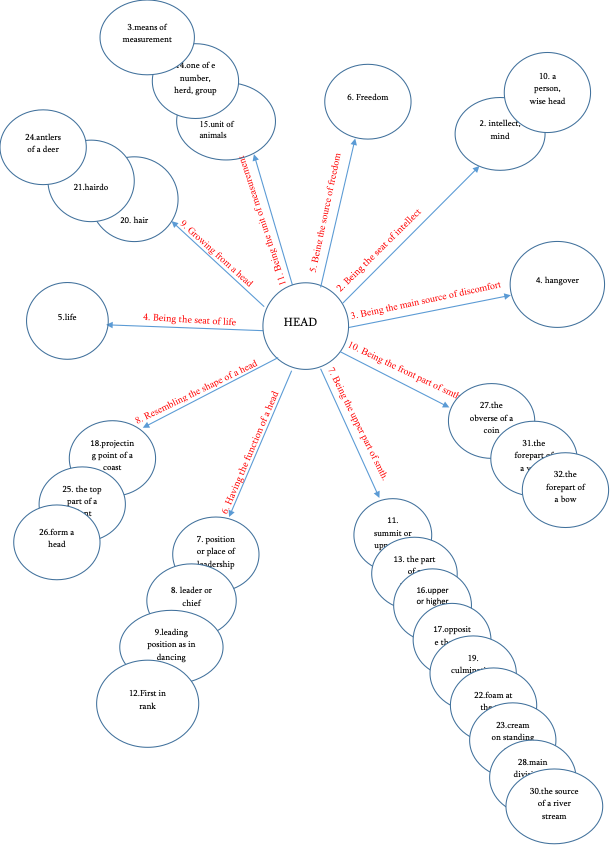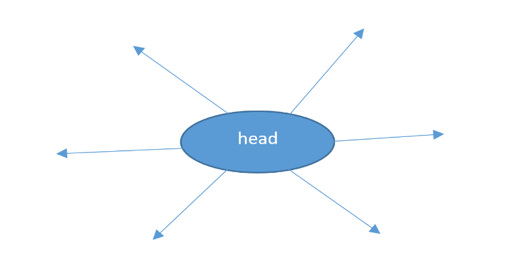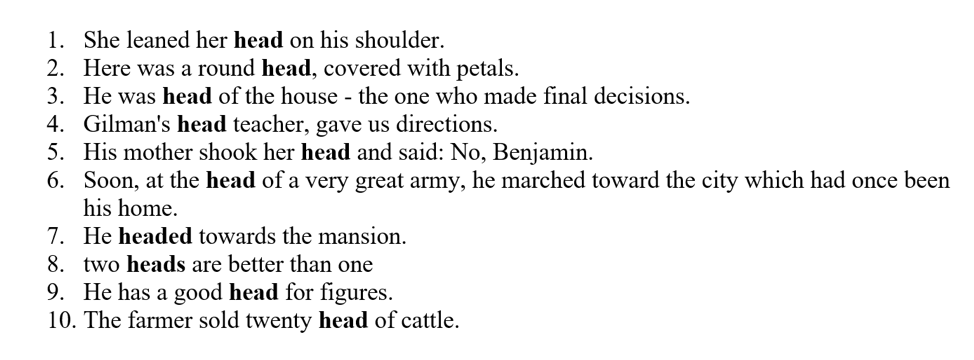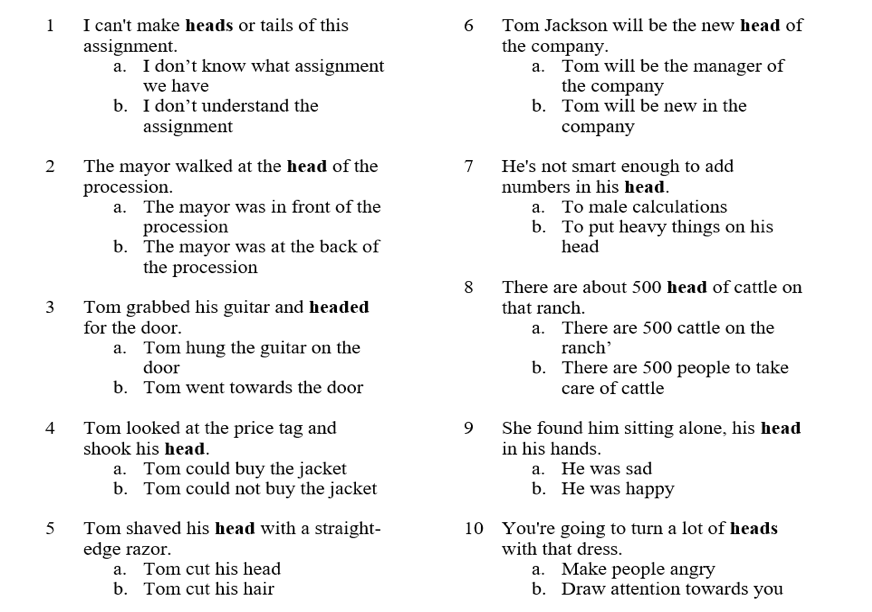Teaching Polysemous Words to High School Students
Introduction
The present article deals with the issue of teaching the vocabulary of a foreign language in accordance with principles developed in the cognitive linguistics. The paper focuses on the polysemy and its outcomes in teaching English as a foreign language. Studies in cognitive linguistics show that polysemous words form different structures of interrelated senses that can be described systemically. This approach can be successfully applied in teaching English as a foreign language.
Raising students’ and teachers’ awareness of cognitive mechanisms, which create different semantic bridges within a polysemous word, is important in the process of language learning. This approach does not exclude the traditional way of memorizing words, on the contrary, we believe that, in addition to memorizing, understanding and acquisition of the cognitive structure of word senses will help us in the process of learning and teaching.
Thus, the article argues that if a student knows how specific conceptual mechanisms contribute to the development of structures of polysemous words and idioms, he/she will easily perceive and memorize meanings. We intend to show that if we want to achieve better results, we should explain to students the origin of word senses and show them links between the main and transferred meanings of a polysemous word.
The relevance of the issue:
"Tom was fired because of his laziness" – reading the sentence aloud in the class caused misunderstanding and confusion among the majority of students.
- "Tom was burned because of his laziness";
- "Tom was shot because of his laziness" – different versions of the translation were proposed.
These translations confused the majority of the students. They realized that there was something wrong, a person cannot be burned or shot for laziness.
What was the reason of the students' mistake? The simplest answer will be if we say that the student incorrectly translated the word fire. But how should he know that in the context to be fired from work/position, the word fire conveys a different sense? The phrase ‘to be fired’ and the verb ‘to fire’, indicate similar processes for him, but the result is different. In this case the translation helped him to realise that the meaning of the word fire could be different, but he was unable to guess what could have been the right meaning.
As we know, the English language is rich in polysemy. Most of the polysemous English words are very frequently used, which makes it difficult to communicate. It also leads to the confusion between the teacher and a student, because most probably the teacher knows and sees the connections between meanings of a word, but in the given time the teacher prefers to be limited to one of the contextual meanings that is revealed and not explain links between senses. Hence, meanings of polysemous words remain unrelated to each other and unsystematic for students. It prevents teachers and students to deal with polysemous words in the class. Most of the teachers prefer not to expand more on such words, just to explain specific contextual senses. But a more productive strategy to master words would be to explain meanings and show students the relations between senses or links to the main meaning of a word for mental representation. Knowledge of these words is an essential prerequisite for the formation of a vocabulary base [Nation, 2008:32]; [Cobb, 2006:42]; which, of course, will help English learners to understand 80% of English texts. Nevertheless, teaching of polysemous words is ignored, and the reasons are different.
The teacher either does not have enough time during a lesson to explain meanings of polysemous words or is not sufficiently qualified. The textbooks do not provide any information that will help teachers to deal with the issue. The words which have many meanings are often considered to be a full-headache [Thornbury, 2002: 8] for both teachers and students. Sometimes the practice of teaching polysemy leads to failure, because [Tyler and Evans, 2004] different meanings are considered as homophones (a list of meanings that are unrelated to each other, and somehow coded in the same phonological form).
To illustrate this, the following examples are presented of the word over:
a. The picture is over the mantle.
b. The teller at the central bank switched the account over to a local branch.
c. The film is over.
d. Arlington is over the river from Georgetown [Tyler and Evans 2004 : 152].
According to the researchers, modern foreign language text-books cannot explain links between meanings of words in the above examples. This creates a fragmented picture in students’ minds that senses of polysemous words are scattered and disorganized. Meaning is also taught in a scattered manner, using the traditional "translate, memorize" method rather than using the findings of cognitive linguistics. It can be said that polysemous words are mostly learned superficially.
The researchers of applied linguistics have been seriously interested in studying meanings of words and their role in teaching a language. Lennon [Lennon, 1996]) examines high frequency word, easy and verbs, put, go, take, and concludes that even though a student may have a "wide representation" of the meaning of a word, he/she still has vague lexical knowledge of polysemous meanings and phrases. Lennon (1996) says that it is necessary to work on the high-frequency words in the class that are often polysemous and are involved in creating a variety of idiomatic expressions.
The Study
Laufer writes: “It often happens that students know one meaning of a polyseme or a homonym and are reluctant to abandon it even when, in a particular context, its meaning is different. The mistaken assumption of the learner is that the familiar meaning is the only one” [Laufer,1997: 26].
There are frequent cases when a student knows a word in its one meaning but does not know other meanings that would help to understand the word in a particular context. In such a case, a student refers to a dictionary to find out what the meaning of a word is. Looking up a word in a dictionary seems to be a very simple task, but two factors should be considered here. First of all, the selection of specific content depends on the ability of a student to fully understand the context in which the word is used. Misinterpretation of any other word further hinders understanding. And secondly, the dictionaries, even the student oriented ones, divide words into smaller sections. For example, when the dictionary entry of the word head has 32 meanings, or the word eye has even more, it is difficult to identify the one that you need, so the student often avoids the use of a dictionary and addresses the electronic resources that make it even more difficult to identify the necessary meaning.
The semantic characteristic - a set of meanings has a significant impact on the acquisition of a word [Laufer, 1997:28], in the sense that words with multiple meanings are more difficult to learn than words with only one sense. As mentioned above, polysemes or homonyms in English are numerous. Below is an example of a polysemous word:
(1) Head (core) - Top part of your body with eyes, mouth, brain etc. : Severe head injuries.
(2) Head (extension 1) - Top person, the leader or person in charge of a group or organization : Eileen is head of the family now.
(3) Head (extension 2) - Top part of something : Write your name clearly at the head of each page.
(4) Head (extension 3) - Front part of : The head of a hammer [Longman Dictionary of Contemporary English, 1995: 657].
The extensions of the word head have metaphorical meanings and can be easily linked to their main, literary meaning. For example: the second extension ‘top-person, the leader or person’ originates from the literary meaning ‘head’ - it emphasizes that this part of the body is the most important part because it contains the brain. The third extension - top part of ‘the upper part’ derives from the fact that the head is the upper part of the body. Such a clear interaction between senses simplifies the learning process. Studies show that such interrelations can help a learner to study the basic meaning and remember the metaphorical shift more easily [Evans and Tyler, 2008]; [Boers and Lindstromberg, 2008], but if teachers and students do not see these connections between the basic and transferred senses of a polysemous word, the learning burden as well as teaching becomes more difficult.
In order to help learners, it is important to show them the cognitive mechanisms underlying the semantic extension of meaning.
Method Used
It is important to regularly teach students polysemous words and give them time to be able to create links, use cognitive skills to understand the mechanism, find parallels with their native language, that will make it easier to acquire a foreign language.
The article presents an already tested method with the help of which we can show learners how to study polysemous words more easily and we can make the whole learning process more enjoyable.
At the first stage, we selected several polysemous nouns in the English language and analysed them, namely, names of body parts (e.g. head, hand); nouns denoting facial parts (e.g. mouth, eye), nouns denoting internal organs (e.g. heart). For the study of mentioned polysemous nouns we applied the definitional method of analysis, the method of contextual analysis and specifically, the corpus methodology. Our study has shown that the above mentioned nouns form a sun-like model [Margalitadze, 2006; 2014] that clearly shows semantic bridges between the main and transferred senses. We called this universal model of noun a solar model, which revealed three sub-models: the short-ray solar model; long-ray solar model (with single ray) and long-ray solar model (multiple rays). On the basis of our preliminary research we conducted several lessons with the tenth grade students.
The picture below will help students to see the different transferred meanings of the main meaning. On the basis of the diagram, a teacher will be able to show students semantic connections between the meanings of the word head that will help them to perceive and remember meanings easily (see Picture 1).
The polysemous model of the noun Head.

Picture 1.
We present the method which shows how the research can be used for the benefit of a learner in the English language teaching process on the example of the word head.
Lesson Plan
Day 1
Lesson topic: Teaching Vocabulary to High School Students – Polysemous approach
Grades: 9-12
Time: 45 m
Lesson goal:
Students will be able to
- analyze connections/links between the basic and transferred meanings of polysemous words;
- identify the basic and metaphorical meanings of polysemous words.
Lead-in:
Step 1: (Students work individually) Students write a sentence using the word head on a piece of paper. When every student finishes their sentences, students work in pairs to share their sentences.
The teacher elicits a few answers (Time: 5m)
Step 2: The teacher writes the word head in the center of a board and asks students to brainstorm any meaning of head that they come up with in the English language. The teacher writes responses on the board (time: 3m)

Step 3: Students work in small groups. Each group has a dictionary, or a dictionary copy of the word head and try to write out all the different meanings that the word head has. The group members present their findings, each group will present 5-7 meanings of the word. In parallel, the teacher adds new meanings that arise during the brainstorming (Time - 15 minutes)
Step 4: The teacher asks students to identify the part of speech in the meanings on the board (3 minutes)
Step 5: Mini lecture. The teacher notes that the word head in the center is the key meaning of the word, and the rest of the senses that are shown with arrows are the transferred meanings. It is also advisable that the teacher provides a picture with different meanings of head (see Picture 2). Start with simple examples - the meanings of head derived from the semantic component ‘resemblance to the shape of head’ (5 minutes).

Picture 2.
Step 6: Students work in groups to identify main and transferred meanings of the word head (7 minutes).

Step 7: Students work in the same groups. The groups write 3 sentences for the main meaning of the word head and 3 sentences on the transferred meanings (10 minutes).
Lesson Plan
Day 2
Lesson topic: Teaching Vocabulary to High School Students – Polysemous approach
Grades: 9-12
Time: 45 m
Lesson goal:
Students will be able to
- analyze the connection/links between the basic and transferred meanings of polysemous words;
- identify basic and metaphorical meanings of polysemous words;
- use the main and transferred meanings of head in their own sentences.
Step 1: Students work in pairs to do the assignment (7 minutes).

Step 2: Students work individually to write down all the meanings of head that they remember from the previous lesson (5 minute);
Step 3: Students change theirs groups and share their meanings (3 minutes).
Step 4: Group 1 reads one of the meanings, Group 2 composes a sentence for this meaning. If the proposed sentence is wrong, the first group reads another meaning and so on until all the meanings are used listed in Step 2. Meanings can be repeated between groups (15 minutes).
Step 5: The students return to their seats. Students write 2 meanings on a small sheet of paper. The teacher collects all papers and asks randomly selected pairs to pick up any paper and try to come up with a short dialogue/conversation on the meanings and present to the whole group (15 minutes).
Homework: Write down meanings of the word hand from the dictionary for the next lesson.
Conclusion
Lessons conducted with this method demonstrated that students easily learn and memorize polysemous meanings of a word in the way described above rather than by traditional method of memorizing. Similarly, the same type of lessons can be conducted on different polysemous nouns. For this we will need to work beforehand on the word we want to teach to our students. This method is more fun and interesting for students as they differ from their daily lessons, almost all students are actively engaged in the course, they do not have to memorize a word, but they acquire the word though practical activities. It is different from the material provided in the textbook. Facilitating the study and understanding of polysemous words is very important for learning the English language, because, as mentioned above, the English language is characterized by great number of polysemous words and these words are of high frequency both in speaking and writing.
References
| Cobb. T. 2006 |
Language Vocabulary Acquisitions. In Horst, M. & TCobb. (Eds). Second special vocabulary edition of Canadian Modern Language Review. 63 (2). |
| Ehrman M. 1990 |
Adult Language Learning Styles and Strategies in an Intensive Training Setting. The Modern Language Journal. Oxford 74: 311-327. |
| Glucksberg S. 2001 |
Understanding of Figurative Language: From Metaphors to Idioms. Oxford: Oxford University Press. |
| Longman 1995 |
Longman Dictionary of Contemporary English: Longman. |
| Thornbury S. 2002 |
How to teach vocabulary. Harlow: Longman. |
| Asher N. 1996 |
Lexical disambiguation in a discourse context. In James Pustejovsky and Branimir Boguraev (eds.). “Lexical Semantics: The Problem of Polysemy”. Oxford: Clarendon Press. |
| Boers F. 2008 |
II Cognitive linguistic approaches to teaching vocabulary and phraseology. Lindstromberg: Seth. |
| Geeraerts D. 2010 |
Theories of Lexical Semantics. Oxford: Oxford University Press. |
| Laufer B. 1997 |
Second Language Vocabulary Acquisition: A Rationale for Pedagogy. Cambridge: Cambridge University Press. |
| Tyler and Evans 2004 |
Applying Cognitive Linguistics to Learning the Semantics of English to, for and at. An Experimental Investigation: Georgetown University. |













